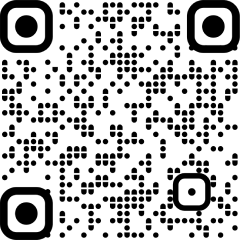India’s elevator business is undergoing a major transformation, ET RealEstate


India’s elevator business is undergoing a major transformation right now. The Internet of Things (IoT), predictive maintenance enabled by Artificial Intelligence (AI), and inclusive design are driving this shift. Combining these technologies changes not just accessibility and safety but also how we see vertical movement within buildings.
The traditional approach to elevator maintenance involved technicians attending to malfunctions only after they occurred. This disruptive and protracted downtime strategy may harm property operations and tenants’ experiences. Nevertheless, IoT and AI are used in predictive maintenance to foresee possible problems before they become serious ones. This proactive strategy guarantees improved operations and a better experience for all the engaged parties.
The power of AI in predictive maintenance
AI plays a crucial role in predictive maintenance as it analyses data collected from sensors installed within elevators. These sensors monitor several variables, such as temperature, sound, and motor performance. AI algorithms can detect potential equipment failures by observing little deviations from their regular functioning. It not only reduces the amount of time that elevators are out of service but also increases the lifespan of elevator components, resulting in significant cost savings.
Inclusive design for enhanced accessibility
While inclusive design principles guarantee that everyone may access and use elevators securely and comfortably, predictive maintenance takes care of the technical elements of their operation. With an ageing population and greater attention on handicap rights, this is especially crucial in India. Research states that 2.68 crore, or 2.21% of the country’s 121 crore people, are classified as “disabled.” This group can be empowered, and social inclusion can be increased via inclusive design elements in escalators and elevators.
Here are some examples of inclusive design features in elevators and escalators:
- Both audio announcements and Braille buttons can be incorporated into elevators and escalators for the purpose of accommodating visually impaired users.
- Wider doorways and ample space can accommodate mobility devices resulting in ease of movement. The dimensions should comply with the accessibility standards outlined in the National Building Code of India (NBC).
- Emergency call buttons with clear instructions in multiple languages can ensure that everyone understands how to use them in an emergency situation. Additionally, these buttons must adhere to accessibility guidelines set forth by the Bureau of Indian Standards (BIS).
- Elevators should feature automatic door opening and closing with extended dwell times for users who require additional time to enter or exit. Additionally, slip-resistant flooring and handrails are essential to ensure safety for all users.
Challenges and the road aheadIntegrating artificial intelligence and the Internet of Things into elevator and escalator systems is quite difficult despite their potential. Data security and privacy are crucial since these systems capture and send sensitive user data, including usage patterns and occupancy levels. Data integrity must be protected by strong cybersecurity methods, including encryption and access restriction, under the Indian Personal Data Protection Bill.
AI-powered predictive maintenance also depends on training data quality. To avoid false alarms and provide accurate forecasts, algorithms must be updated with real-world data. Integrating this modern technology involves infrastructure and technical skills, which may be difficult for certain building owners. Government initiatives and industry cooperation can encourage the adoption of AI and IoT in elevator and escalator systems by offering financial support and technical assistance.
The role of government regulations
The need to implement government regulations is becoming more crucial as AI and the IoT become more integrated into elevator and escalator systems. These rules must ensure data confidentiality and security by implementing clear guidelines that protect user data obtained by AI and IoT technologies.
If the Indian Personal Data Protection Bill is signed into law, it would establish a framework for data management in the elevator industry. Strict safety criteria are essential for AI-powered elevator systems and the well-being of passengers. Hence, regulatory agencies such as the Bureau of Indian Standards (BIS) must develop safety rules.
Furthermore, existing accessibility criteria, such as those described in India’s National Building Code (NBC), must be reviewed and revised to incorporate new technology and ensure that inclusive design principles are followed in all elevator and escalator installations. While preserving the public’s safety and privacy, the government may promote innovation by establishing a thorough regulatory framework.
Smart elevators & escalators for all
India’s elevator and escalator sector is undergoing a remarkable transformation because of the integration of artificial intelligence, the Internet of Things, and inclusive design. It is causing a notable change towards providing equitable and accessible mobility for everyone.
By integrating these advancements, we can guarantee that vertical transportation is within reach for all individuals, empowering them while ensuring the utmost safety and reliability.
Moreover, with these cutting-edge technologies, the forthcoming era will not only enhance building operations and user satisfaction, but will also create opportunities for individuals of diverse abilities, fostering social inclusivity.






